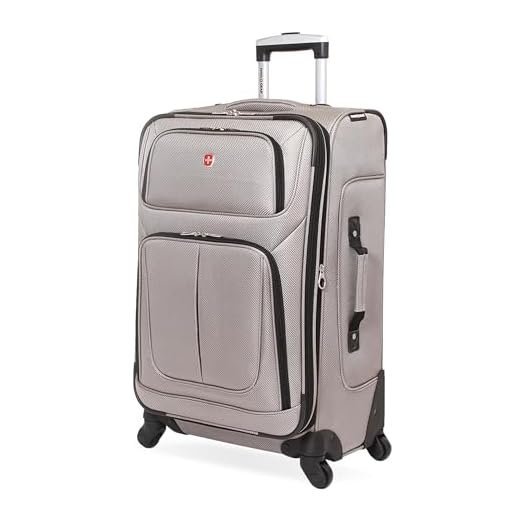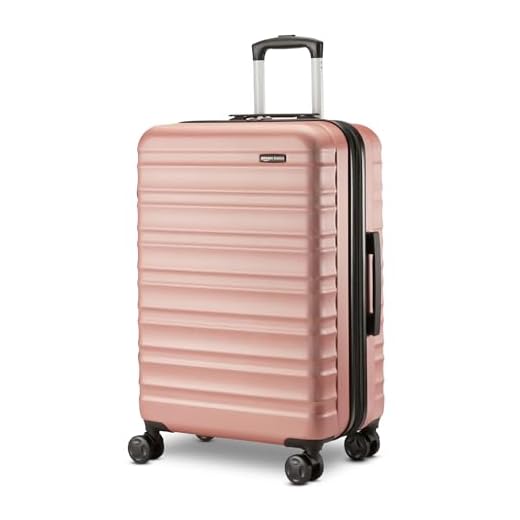





Typically, a standard car accommodates around 15-16 cubic feet of cargo volume. This measurement translates to multiple suitcases, small boxes, or personal items, dependent on their dimensions. For efficient packing, consider utilizing soft-sided bags, which often offer flexibility compared to rigid cases.
It’s advisable to prioritize items by weight and size. Heavier objects should rest at the bottom, while lighter and more fragile items go on top. Additionally, utilizing the rear seat area can easily increase overall capacity. Folding down seats may create further room for larger items, providing creative solutions for bulkier gear.
Regularly check interior dimensions to ensure optimal use of space. Keep in mind that the shape of objects affects how well they bundle together. Roll clothes tightly and nest tools within one another to maximize available areas. With careful planning, you can efficiently organize belongings for any situation.
Measuring Sedan Trunk Capacity in Cubic Feet
To determine the volume of the trunk, measure its dimensions in inches: length, width, and height. Multiply these figures together to get the total cubic inches, then convert to cubic feet by dividing by 1,728, as there are 1,728 cubic inches in a cubic foot.
Practical Example
If the trunk measures 40 inches in length, 36 inches in width, and 20 inches in height, the calculation would be as follows: 40 x 36 x 20 = 28,800 cubic inches. Dividing 28,800 by 1,728 results in approximately 16.67 cubic feet.
Factors Influencing Storage Space
Keep in mind that trunk shapes vary greatly, affecting how items are arranged. Consider the presence of wheel wells or a sloped rear that may reduce usable area. Utilizing soft bags instead of hard suitcases can optimize space, allowing for better organization and fitting of more items.
Types of Luggage and Their Dimensions
Choosing appropriate bags and containers is crucial for efficient transport. Here are common types along with their standard sizes:
- Carry-On Suitcases: Typically sized at 20-22 inches, dimensions usually reach around 22″ x 14″ x 9″. Suitable for short trips.
- Checked Baggage: Common sizes range from 24 to 30 inches, dimensions approximately 27″ x 16″ x 11″. Ideal for longer vacations.
- Duffel Bags: Versatile and flexible, they can range from small (18-24 inches) to large (over 30 inches). Size can vary significantly.
- Backpacks: Sizes vary greatly. Daypacks usually measure around 15-20 inches, while larger travel backpacks can be 60 liters or more.
- Strollers: A good choice for families; compact or umbrella strollers, like the best umbrella stroller babylist, typically fold to around 12″ x 10″ x 41″.
It’s essential to consider the trunk’s dimensions and individual items’ sizes when planning packing. Efficient arrangement enhances space usage, allowing for more items within limited areas.
For pet owners, ensuring safe travel for your dog is vital. Knowing how to keep dogs from escaping fence can provide peace of mind during travel.
Strategies for Maximizing Trunk Space
Utilize compression bags for clothing. These bags reduce the volume of garments, allowing more items to be stored efficiently. Aim for a vacuum or roll-type compression bag, which can cut down bulk significantly.
Organizational Accessories
Invest in trunk organizers or cargo nets. These tools help keep items separated and stabilize them during transit. By grouping similar objects together, space becomes more manageable. Also, consider using removable dividers to create sections based on need.
Optimizing Shape and Arrangement
Place heavier items at the bottom, distributing weight evenly. Arrange luggage utilizing corners and gaps. Use soft bags that mold to available space rather than rigid suitcases. Experimenting with various orientations can reveal additional space for smaller items like shoes and toiletries.
When planning outdoor excursions, check out the best geek umbrella to ensure comfort while keeping your items dry.
Real-Life Examples of Luggage Packed in Sedans
A sedan’s trunk, typically ranging from 12 to 15 cubic feet, can accommodate various types of bags for different occasions. For instance, loading a compact sedan for a weekend getaway might include two medium-sized suitcases, a small carry-on, and a backpack. This combination fits within most trunk capacities, leaving enough space for additional items like a garment bag or a picnic blanket.
When preparing for a family road trip, a full-size sedan can often hold three standard-sized suitcases, a stroller, and several smaller bags. Organizing these items vertically by stacking suitcase lids can maximize space efficiently. Additionally, placing soft bags filled with clothing in any gaps helps utilize every inch of the trunk.
Examples by Scenario
For a business trip, a traveler may opt to bring a rolling suitcase and a laptop bag. Both items can be neatly arranged in the trunk, allowing for quick access. With creative packing techniques, it’s feasible to include a carry-on for overnight essentials, ensuring that all necessary items are on hand without cluttering the cabin space.
Seasonal Travel Insights
During winter trips, utilizing both the trunk and the backseat for cargo is necessary for ski trips. By placing a set of skis in the rear passenger area and storing snow gear in the trunk, it becomes possible to transport all equipment while maintaining a comfortable seating arrangement for four passengers.







